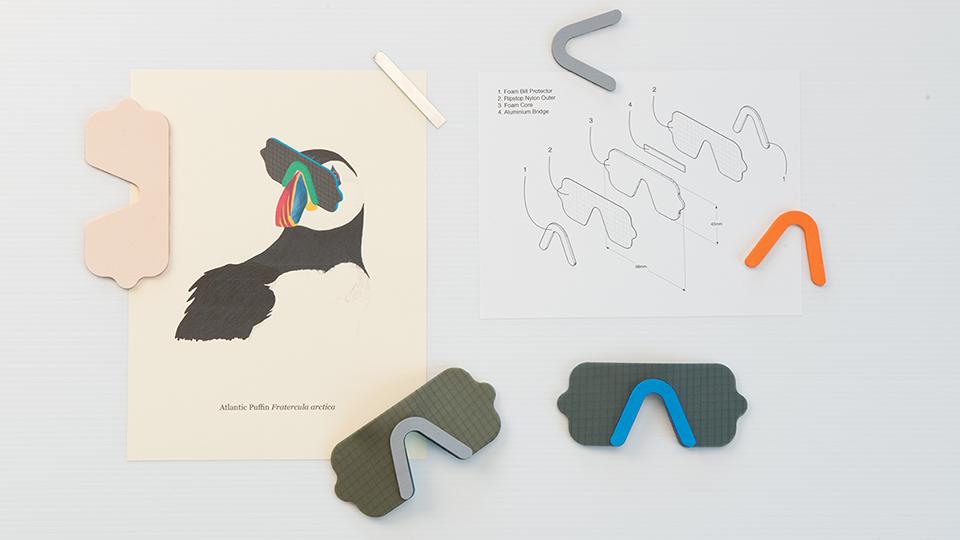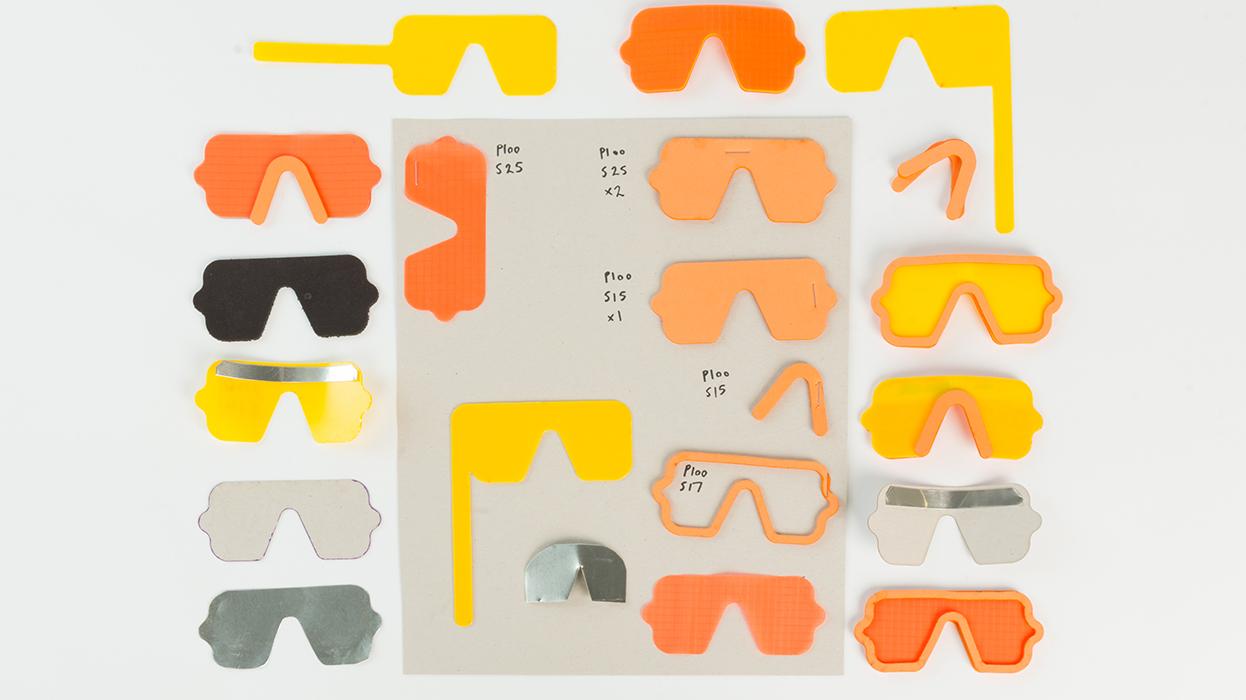Puffin 'sunglasses' aid in bill 'glow' discovery
Primary page content
Protective 'sunglasses' for puffins created by design researchers at Goldsmiths, University of London have helped scientists demonstrate that the birds’ bills 'glow' in ultraviolet light.

The eyewear protects the birds' eyes from UV light
The unique eyewear was designed and produced at The Interaction Research Studio at Goldsmiths for an international project led by researchers at the University of Nottingham working with scientists in the US and Canada.
The project set out to investigate photoluminescence in the bill of the Atlantic puffin (Fratercula arctica). This phenomenon was first observed in puffins that had died of natural causes but in order to understand it the scientists had to shine ultraviolet (UV) light on the bills of live birds. With animal welfare at the heart of the project, this meant finding a way to protect the birds’ eyes from potentially damaging UV light sources and the answer was to develop opaque puffin-friendly eyewear or puffin ‘sunglasses’.
Dean Brown, a researcher at The Interaction Research Studio, said: “The development of the sunglasses was a purely user-driven design process – the unusual thing was that the user in this case was a puffin.”
The initial prototypes were born from discussions with ornithologist and environmental Consultant Jamie Dunning who knew about The Studio through his involvement with the My Naturewatch project. Jamie provided the Goldsmiths team with scenarios of how the eyewear would be used and important puffin metrics.
The Interaction Research Studio investigated different forms, sizes, materials and wearing concepts that prioritised the comfort of the bird and outdoor use. In-studio fabrication and batch production facilities meant the team were able to laser cut a variety of mock-ups that could be quickly tested. They fitted their initial ideas on deceased specimen puffins to ensure that the designs were completely suitable before creating their ready-to-wear range for live puffins.
Dean Brown said: “We settled on a simple nose-resting design, making the glasses quick and unobtrusive to fit over the puffin’s bill, with a brightly coloured nose piece that bridges the animal’s distinctive bill. The material composition uses a ripstop nylon layer to create water repellent outer surface on the front and back with the core material and nose protectors in soft neoprene foam. An aluminium bridge component was introduced to enable the glasses to curve and hold to accommodate different bill and head sizes. The overall ‘sandwich’ assembly enabled a slim and light-weight design to be completely light absorbent.”
With the help of these sunglasses, the international team demonstrated photoluminescence in the bill of the Atlantic puffin for the first time.
Jamie Dunning, who was undertaking research at Nottingham’s School of Life Sciences for his master’s degree when he made the discovery, said: “At this stage, we aren’t really sure why puffins need this trait. However, we expect that they can detect it and we suspect that it is linked to sexual signalling, feeding young in their burrows or perhaps even capturing prey. We will be working on these questions in the future.”
Read more about this research on the University of Nottingham website.
